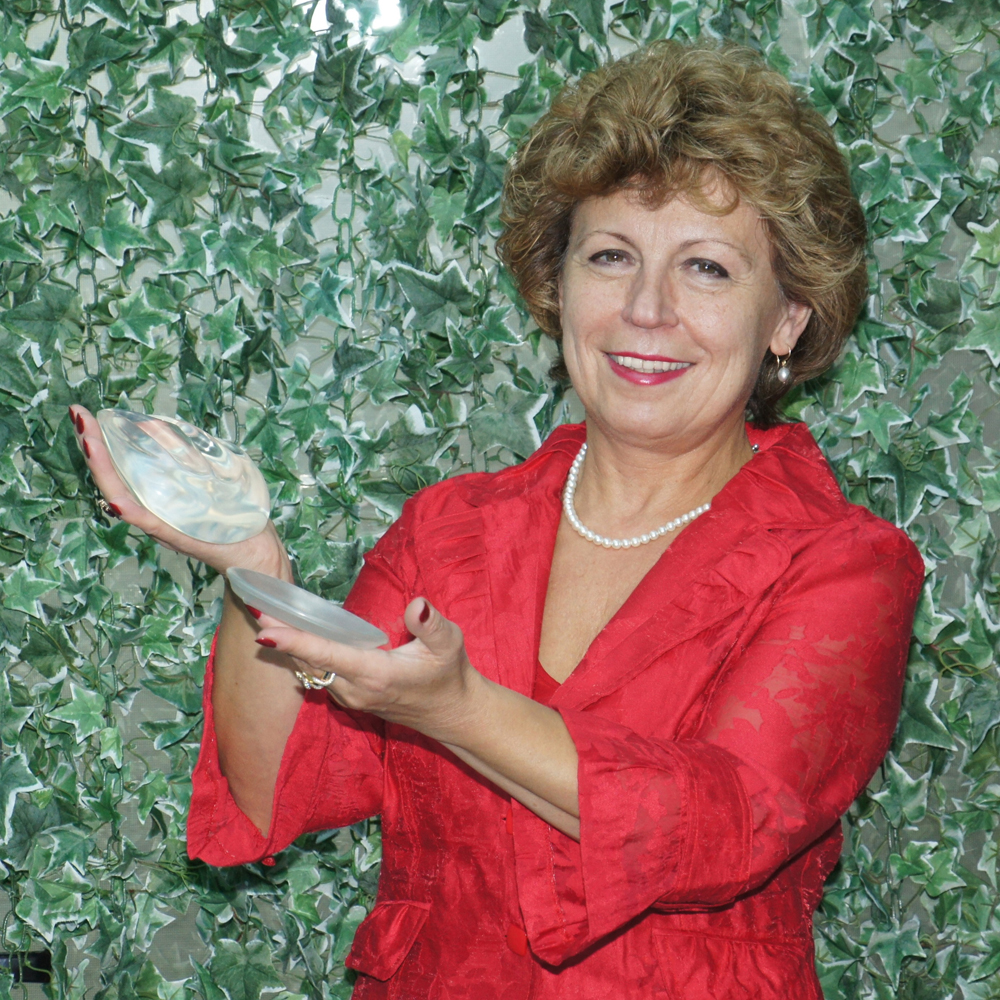New Material Offers Safer Breast Implants, Integrates Cancer Treatment

This Behind the Scenes article was provided to LiveScience in partnership with the National Science Foundation.
According to the National Cancer Institute at the National Institutes of Health, an estimated one in eight American women will develop breast cancer during her lifetime. Out of those women who develop breast cancer, many will have mastectomies and will undergo breast reconstruction. A report from the America Society of Plastic Surgeons says that 96,277 women had breast reconstruction in 2011.
The materials used for breast reconstruction, such as silicone, have improved over time, but according to a 2011 report from the FDA, “as many as ... 1 in 2 primary reconstruction patients — meaning those who have reconstruction performed at the same time as a mastectomy — require implant removal within 10 years of implantation” due to complications or poor outcomes.
What if there was a way to create safer breast implants and also fight cancer?
A team of researchers from the University of Akron bridged materials science and medicine to develop a new type of rubber material that can be used as the shell of a breast implant. Diagnostic agents that help reveal the presence of cancer cells, as well as cancer-fighting drugs, can be embedded into the shell and released into the body.
“We are trying to integrate breast reconstruction with cancer treatment,” said Judit E. Puskas, University of Akron professor of chemical and biomolecular engineering, who is leading the project. “We don’t have enough research in areas related to women’s health.”
The new biocompatible materials are polyisobutylene-based, which means that they are similar to butyl rubber, or synthetic rubber. These new “biorubbers” are thermoplastic elastomers, or polymers with elasticity and the potential to become pliable and moldable above a certain temperature, as well as the ability to return to their initial state upon cooling. This material is lighter and stronger than silicone rubber. Compared to other rubbers, it is especially impermeable, preventing liquids from seeping through — essential for prevention of gel leakage in an implant. The material is also environmentally friendly and can be reprocessed.
Sign up for the Live Science daily newsletter now
Get the world’s most fascinating discoveries delivered straight to your inbox.
A previously developed PIB-based material — a predecessor to the new biorubber — has successfully been used as the coating on drug-eluting coronary stents. These are tubes placed in coronary arteries that slowly release a drug to block cell proliferation that can block arteries. This material is currently used in clinical practice, with over 6 million stents implanted.
“Drug eluting stents reduced the incidence of [repetitive] blocking of the artery from 30 to 8 percent,” said Puskas.
Puskas and her team worked to improve the properties of this PIB-based material, and came up with the new biorubber. The unique qualities of this material offer a vehicle to fight and treat cancer, reduce the risk of inflammation, and transmit painkillers.
The polymer in the new material can be spun into a fiber mat; the fibers, which can be attached to the implant, encapsulate various cancer-fighting drugs. Over time, the drugs slowly release into the body. Delivering drugs directly to the cancer cells by embedding them into the fiber mat coating could reduce the amount of drugs needed for treatment, and thus lessen side effects.
Researchers can also encapsulate a diagnostic agent to reveal the presence of cancer cells and their location as well as help determine the efficiency of the drugs. Then, drugs could be administered to fight the cancer cells.
In addition, the implant can be coated with drugs that help reduce the risk of inflammation in the tissue surrounding the implant. Such an inflammation could result in tissue contraction, the shortening or other distortion of tissue, or even a ruptured implant.
In addition to breast prostheses, the new material has other applications, such as vascular grafts, which are transplanted or prosthetic blood vessels used in surgery. The material can also be used with implantable devices incorporating antimicrobials to kill or inhibit the growth of microorganisms, steroids and analgesics or painkillers.
In March, Puskas and her team received international recognition for their new material. It was one of the five winners of the General Electric healthymagination Breast Cancer Challenge. Their research was selected among 500 entries from 40 countries. Each winner received a $100,000 seed award and will be given access to additional funding for further research and development.
Learn more about Puskas and her research.
Editor's Note: The researchers depicted in Behind the Scenes articles have been supported by the National Science Foundation, the federal agency charged with funding basic research and education across all fields of science and engineering. Any opinions, findings, and conclusions or recommendations expressed in this material are those of the author and do not necessarily reflect the views of the National Science Foundation. See the Behind the Scenes Archive.










